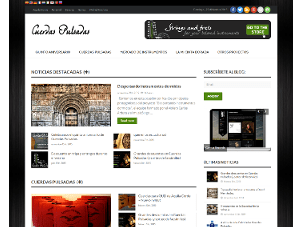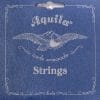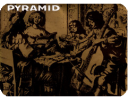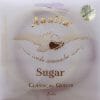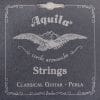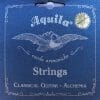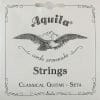A few months ago, John Griffiths shared with us an eye-catching project that was in the making in Trujillo (Cáceres) … The idea was so simple that we It seemed crazy: the technology students of the Francisco Orellana institute were embarking on the construction of nine vihuelas. Without prior knowledge of Lutheranism, without having previously known the instrument and with hardly having adequate materials and tools for a work of such magnitude …
As soon as we knew the scope of the adventure, we did not doubt it for a moment: Cuerdas Pulsadas had to support this pioneering initiative and we immediately offered all the help we could to bring it to fruition.
Only now, after having met Francisco Caballero (his leader and promoter), is when we understand that madness can crystallize, that virtue can be made out of necessity and that when a teacher with a vocation sets out to do something, circumstances end for accompany you …
So, on April 11 we went to meet Francisco, his student-violeros and the nine vihuelas. Not only to give them first-hand the donation of strings and frets that the instruments needed to sound, but also to share with them a didactic talk about the plucked string (with some fantasies played live!).
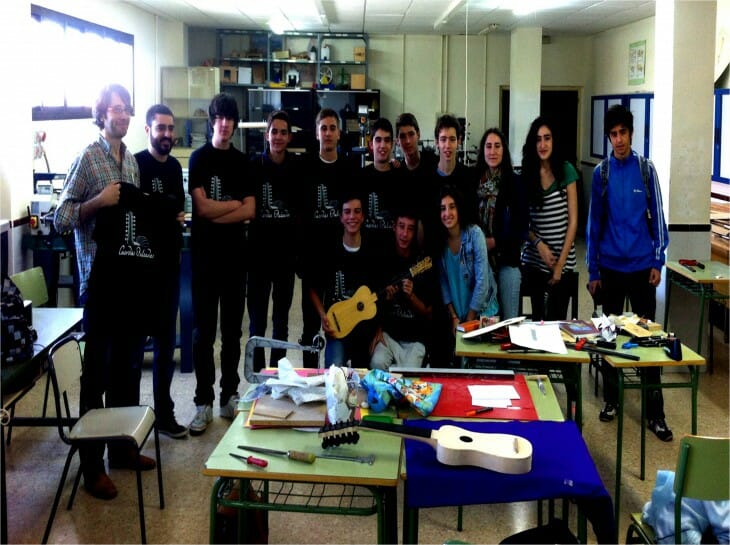 The day was very intense and there was time to talk about vihuelas, Renaissance guitars, vihuelists, strings and tablatures, among other interesting topics. But the most important thing is that we were able to string and string one of the project’s vihuelas, so that the students were able to hear, for the first time, how what they had worked with their own hands sounded like.
When we finally got to hear the first vihuela, the result was spectacular. The vihuela had a very fine tuning, after some slight changes in the height of the brow and in the distribution of the orders, and its monoxyl construction gives it a very sweet and collected sound. The vihuelas have a slightly smaller throw than what we are used to seeing in the professional environment (57 cm), so they are also very accessible and comfortable to handle and play.
Here we have collected some of the best moments of our visit (you can see it in full screen for your convenience).
The day was very intense and there was time to talk about vihuelas, Renaissance guitars, vihuelists, strings and tablatures, among other interesting topics. But the most important thing is that we were able to string and string one of the project’s vihuelas, so that the students were able to hear, for the first time, how what they had worked with their own hands sounded like.
When we finally got to hear the first vihuela, the result was spectacular. The vihuela had a very fine tuning, after some slight changes in the height of the brow and in the distribution of the orders, and its monoxyl construction gives it a very sweet and collected sound. The vihuelas have a slightly smaller throw than what we are used to seeing in the professional environment (57 cm), so they are also very accessible and comfortable to handle and play.
Here we have collected some of the best moments of our visit (you can see it in full screen for your convenience).
 We applied the computer knowledge we had to the development of our solution, through an Autocad application we made the restitution from the iconography and we got something like this:
We applied the computer knowledge we had to the development of our solution, through an Autocad application we made the restitution from the iconography and we got something like this:
 Then we continue working on the geometry and we arrive at the following solution:
Then we continue working on the geometry and we arrive at the following solution:
 of which John told us: “I think it’s a very good solution. The design on the right is very similar to images like the cover of” Vocabulari molt profitos per apendre Lo Catalan Alamany y Lo Alamany Catalan “by Joan Rosembach, 1502 ”
of which John told us: “I think it’s a very good solution. The design on the right is very similar to images like the cover of” Vocabulari molt profitos per apendre Lo Catalan Alamany y Lo Alamany Catalan “by Joan Rosembach, 1502 ”
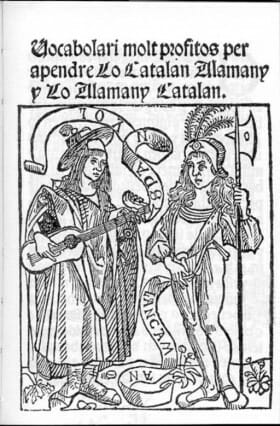 So we continued with that design, he gave us information about the vibrating length, about the action it should have, about how to work the covers so that it had good sound and endless other details. A relevant fact is that all the vihuelas will be built as monoxilas, that is, with the body of the vihuela from a single piece of wood.
So we continued with that design, he gave us information about the vibrating length, about the action it should have, about how to work the covers so that it had good sound and endless other details. A relevant fact is that all the vihuelas will be built as monoxilas, that is, with the body of the vihuela from a single piece of wood.
 The day was very intense and there was time to talk about vihuelas, Renaissance guitars, vihuelists, strings and tablatures, among other interesting topics. But the most important thing is that we were able to string and string one of the project’s vihuelas, so that the students were able to hear, for the first time, how what they had worked with their own hands sounded like.
When we finally got to hear the first vihuela, the result was spectacular. The vihuela had a very fine tuning, after some slight changes in the height of the brow and in the distribution of the orders, and its monoxyl construction gives it a very sweet and collected sound. The vihuelas have a slightly smaller throw than what we are used to seeing in the professional environment (57 cm), so they are also very accessible and comfortable to handle and play.
Here we have collected some of the best moments of our visit (you can see it in full screen for your convenience).
The day was very intense and there was time to talk about vihuelas, Renaissance guitars, vihuelists, strings and tablatures, among other interesting topics. But the most important thing is that we were able to string and string one of the project’s vihuelas, so that the students were able to hear, for the first time, how what they had worked with their own hands sounded like.
When we finally got to hear the first vihuela, the result was spectacular. The vihuela had a very fine tuning, after some slight changes in the height of the brow and in the distribution of the orders, and its monoxyl construction gives it a very sweet and collected sound. The vihuelas have a slightly smaller throw than what we are used to seeing in the professional environment (57 cm), so they are also very accessible and comfortable to handle and play.
Here we have collected some of the best moments of our visit (you can see it in full screen for your convenience).
Fran, how and when did your teaching career begin? How did a “Design and Technology” teacher get to make instruments?Well, I started my experience in the world of education in 1996, when it was still MEC territory. My first destination was a small town in Zaragoza called Bujaraloz. It is already known that the first experiences mark … and my Bujaraloz marked me. In that town, in addition to teaching, I learned many things. Among the things I learned, seeing the experiences of my own students, was that they had built their own Aragonese bagpipes. And there I started to build my first musical instrument … and in the end it sounded and everything. I’ve always loved music, all kinds of music, as long as it’s good … from Heavy to pure folk of granny singing … but of quality. Getting started with instrument building is a kind of fight against the frustration of not being able to play any instrument considerably well … which I’ve tried. I started with the flute and music theory and then I also received classes from the best bagpipe and tambourine teacher in Extremadura, Santiago Béjar. But I think there are colleagues who do it better than me … so I preferred to dedicate myself to construction, which is what I’m really good at … and always to apply it later in the classroom.
We have been able to read in your blog that you have already gone through several similar projects, that is to say , that you have reached the construction of vihuelas after successfully overcoming other similar initiatives with your students from other classes, how do you propose these projects to your students? What are your goals?Every year I usually change projects, so one year I taught in Valencia de Alcántara we built a rayano (diatonic) accordion with the students, and we presented the project to the CSIC Young Researchers congress. The kids won an award that consisted of a one-week stay at the Milá y Fontanals Research Center in Barcelona. Later we dedicated ourselves to the construction of transverse flutes, rabels, and other popular instruments. We have recently made a reproduction from the illustrations of the Canticles of Alfonso X the wise, and these last two years we have dedicated ourselves to the construction of Renaissance cornets. In all projects, we usually start with a preliminary investigation of the instruments and tools that we may need. We work metal, wood and plastics to make our own tools, making the student feel self-sufficient … I don’t think any of them could go to the hardware store and ask for a specific tool that would solve their problem … ” it is better to teach them to fish than to give them the fish. “ Normally we have to develop projects with an almost absolute lack of resources and tools, which makes it a necessity that we manufacture the tools. Buying any tool would be very expensive. With my work with the students, I intend to develop the contents of the subject that I teach, Technology, but in a way in which they have a good time and are motivated and at the same time make me participate in their enjoyment. And in the end it is achieved.
So, your work methodology always includes a research process in which the students are also involved. How have you set out this process in the case of vihuelas?First we did a search for the iconography on vihuelas on the internet. The center does not have many resources to buy bibliography and the surrounding libraries do not have the information we needed either, so it could be said that this project was really born in a forum where the daring professor occurs to contact a certain “John Griffiths “… without knowing who it was. We proposed that he be our guide and, incredibly, he not only accepted but has been the cornerstone to be able to correctly develop all our work. Not only has he provided us with all the information and resolved all the questions that we have raised, but he has also opened the doors for us to meet wonderful people such as David Morales (Strings Pulled), Aníbal Soriano, president of the Vihuela Society, and Manuel Jr. Rodríguez from Guitarras Rodríguez. Regarding the research methodology, we first began to study the Ordinances of the guild of violent men. Thus, we verified that in order to pass the teacher’s exam, the vioro had to be able to design his own instruments … so, said and done, we would study the shapes and design our own instruments and at the end of the course, if everything goes well, I will give them the title of violent teachers. As part of the apprenticeship, the violent apprentices had to be able to draw their instruments with a compass and a ruler. In this way, we had to familiarize ourselves, also with John, with the world of proportions applied to instrument design: the “ genus superparticulare “, the eighth (2: 1), the fifth (3: 2) and the fourth (4: 3). On the vihuelas, of all the existing iconography John recommended that we work on the shape of the vihuela that appears in the work of Bartolomeo di Giovanni (1465 – 1494), “ Noces de Thétis et Pelée “.
 We applied the computer knowledge we had to the development of our solution, through an Autocad application we made the restitution from the iconography and we got something like this:
We applied the computer knowledge we had to the development of our solution, through an Autocad application we made the restitution from the iconography and we got something like this:
 Then we continue working on the geometry and we arrive at the following solution:
Then we continue working on the geometry and we arrive at the following solution:
 of which John told us: “I think it’s a very good solution. The design on the right is very similar to images like the cover of” Vocabulari molt profitos per apendre Lo Catalan Alamany y Lo Alamany Catalan “by Joan Rosembach, 1502 ”
of which John told us: “I think it’s a very good solution. The design on the right is very similar to images like the cover of” Vocabulari molt profitos per apendre Lo Catalan Alamany y Lo Alamany Catalan “by Joan Rosembach, 1502 ”
 So we continued with that design, he gave us information about the vibrating length, about the action it should have, about how to work the covers so that it had good sound and endless other details. A relevant fact is that all the vihuelas will be built as monoxilas, that is, with the body of the vihuela from a single piece of wood.
So we continued with that design, he gave us information about the vibrating length, about the action it should have, about how to work the covers so that it had good sound and endless other details. A relevant fact is that all the vihuelas will be built as monoxilas, that is, with the body of the vihuela from a single piece of wood.
Fran, tell us more about the students and the scope of the project. How much time have you invested? How old are our violent-apprentices from Trujillo?The project has been developed with 4th year ESO students and 1st Baccalaureate students at IES Francisco de Orellana de Trujillo. Due to the lack of resources, we have decided to make an instrument for every two students, plus the instrument that I am making ahead to make sure that things go well and to explain the procedure they have to follow. So, in total, there will be 10 vihuelas. Ages range from 15 to 17 years old and we usually use three hours per week throughout the course … we still have the third evaluation to finish all the instruments.
And, what have been the difficulties that you have had to overcome in this time?The greatest difficulties have been to obtain the materials … from linden wood for the body (it was sold to us by the father of one of our students who is a carpenter), such as spruce pine for the tops and ebony for the fingerboard. So we started with some linden wood blocks. It was John himself who recommended us to use this type of wood … and it turned out to be very cheap. What a relief. Another important difficulty is that, having few resources both at the institute level and at the personal level of the students, we have chosen to save as much as possible both on materials and tools and that is why we have embarked on the task of making many of our own tools.
And what is the most rewarding reward?The reward is daily, seeing how the students get involved … they enjoy it and I enjoy working, which is saying a lot.
To overcome the obstacles of the project, can you tell us what fundamental support you have had?The main support has been those offered by John Griffiths, alma mater of the project and also David Morales (Cuerdas Pulsadas) who has offered us the strings and material for the entwining for free, in addition to visiting us personally and spending a whole day to teach us how to entrench and string the vihuela. Aníbal Soriano has also supported us, who will soon visit us to give us a didactic concert and delve a little more into the world of plucked instruments. In addition, our project will be published in the specialized magazine of the Vihuela Society, Hispanica Lyra.
Do you think this project has changed the students’ perception of plucked instruments or Renaissance music?For the students it has been a discovery since this type of instruments and music do not usually reach their environment. Trujillo is a town with a great name but with little cultural programming related to the instruments of the Renaissance. Therefore, I believe that we have overcome a myth and that the students have been very motivated by researching a Renaissance instrument … (and it did not have to be about electric guitars). They have discovered themselves that they are capable of achieving many things that at first they thought they would not be able to do … but that with a little help they have a lot of potential.
With so many apprentice violators, surely you can tell us some interesting anecdote!Sure, for example, when we had already done the research and had started construction, some student told me that when he finished it he would sell it (he had dedicated himself to researching the price of vihuelas online). I told him that the first one I would not sell but that if he kept working and investigating, he would surely eventually sell them. We must open possibilities for their future … that is what teachers serve, in addition to teaching them what is in the books. We cannot say goodbye to this very special entry without thanking Francisco Caballero for the exquisite hospitality during our visit and also the attention and time that the students dedicated to us. Congratulations for your great effort to carry out the project. Hopefully soon you can send me the photos of all the finished vihuelas and, why not, some of you playing a fantasy!

